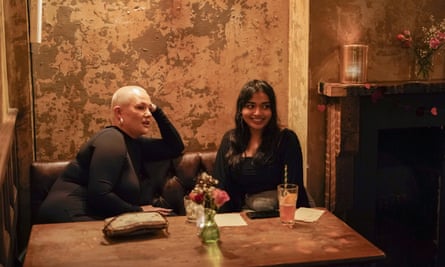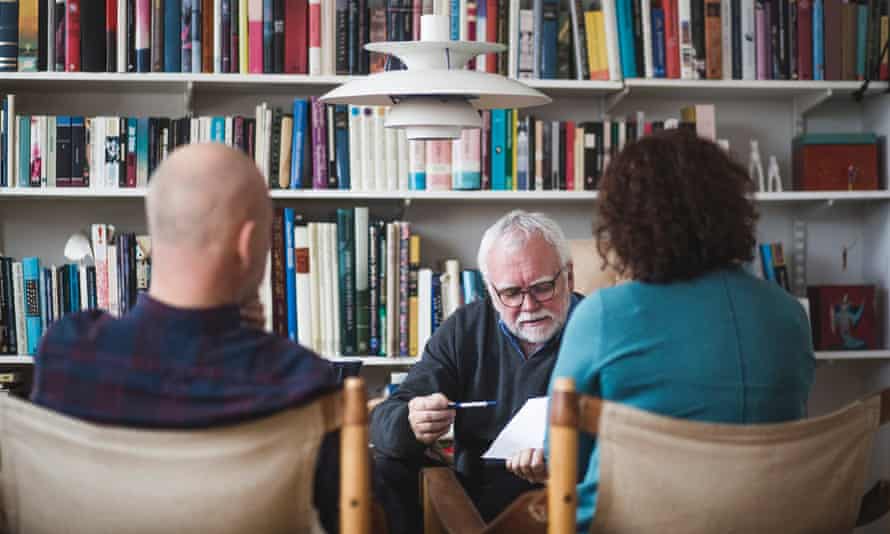“Blessed is the nation that doesn’t need heroes" Goethe. “Hero-worship is strongest where there is least regard for human freedom.” Herbert Spencer
Search This Blog
Saturday 27 January 2024
Tuesday 28 November 2023
Friday 15 September 2023
Tuesday 18 July 2023
A Level Economics 26: Interrelationship between Markets
Changes in one market can have ripple effects on other markets due to the interrelationships between factor and product markets. Here are some examples to illustrate these interrelationships:
Changes in Factor Markets Impact Product Markets:
- Labor Market: If there is an increase in wages in the labor market, it can lead to higher production costs for businesses. This, in turn, may result in an increase in prices for goods and services in the product market as businesses pass on the higher costs to consumers.
- Raw Material Market: Changes in the prices or availability of raw materials, such as oil or metals, can impact production costs. If the price of a key raw material rises, it can lead to increased production costs for manufacturers, potentially resulting in higher prices for finished goods in the product market.
Changes in Product Markets Impact Factor Markets:
- Demand for Skilled Labor: If there is an increased demand for products or services that require specific skills, such as software development or healthcare, it can drive up wages in the corresponding labor market as businesses compete to attract skilled workers.
- Technological Advances: Technological advancements can lead to changes in the demand for certain types of labor. For example, the rise of automation and artificial intelligence may reduce the demand for low-skilled labor while increasing the demand for workers with technical expertise in operating and maintaining advanced technologies.
Interrelationships between Factor Markets:
- Capital Market and Labor Market: Changes in the availability of capital, such as through loans or investments, can impact the labor market. Increased investment in machinery and technology can enhance labor productivity, potentially leading to increased demand for skilled labor or changes in the skill requirements of jobs.
- Education and Labor Market: The quality and level of education and training in the education market can influence the supply and demand dynamics in the labor market. A well-educated and skilled workforce can attract businesses and investment, driving economic growth and creating demand for labor.
Interrelationships between Product Markets:
- Complementary Goods: Changes in the demand for one product can impact the demand for complementary goods. For example, an increase in the popularity of smartphones can drive demand for related products such as phone cases, screen protectors, or mobile apps.
- Substitute Goods: Changes in the availability or prices of substitute goods can influence demand in a particular product market. For instance, if the price of coffee increases significantly, some consumers may switch to substitute beverages like tea, affecting the demand for coffee.
These examples highlight how changes in one market can reverberate through interconnected markets. Factors such as prices, demand, supply, technology, and consumer preferences create complex interdependencies between factor and product markets. Understanding these interrelationships is crucial for policymakers, businesses, and individuals to anticipate and adapt to changes in the broader economic environment.
Sunday 12 February 2023
The Red Flags of Romantic Chemistry

For centuries, our romantic fates were thought to be written in the stars. Wealthy families would even pay fortunes to have a matchmaker foretell the success or failure of a potential marriage.
Despite the lack of any good evidence for its accuracy, astrology still thrives in many lifestyle magazines, while the more sceptical among us might hope to be guided by the algorithms of websites and dating apps.
But are these programs any more rigorous than the signs of the zodiac? Or should we put our faith in love languages and attachment theory? (That’s to name just two fashions in pop psychology.)
The world of matchmaking is riddled with myths and misunderstandings that recent science is just starting to unravel. From the inevitably messy data, a few clear conclusions are emerging that can help guide us in our search for love.
If you are looking for the secrets of romantic success, the most obvious place to start would seem to be the science of personality. If you are an outgoing party animal, you might hope to find someone with a similar level of extraversion; if you are organised and conscientious, you might expect to feel a stronger connection with someone who enjoys keeping a rigid schedule.
The scientific research does offer some support for the intuitive notion that “like attracts like”, but in the grand scheme of things, the similarity of personality profiles is relatively unimportant.
“Yes, it is true that people are more likely to experience chemistry with someone who is similar to them in certain ways,” explains Prof Harry Reis at the University of Rochester, New York. “But if I brought you in a room with 20 people who are similar to you in various ways, the odds that you’re going to have chemistry with more than one of them are not very good.” It is only the extreme differences, Reis says, that will matter in your first meetings. “It’s not likely that you would have chemistry with somebody who is very dissimilar to you.”
The rest is just noise. The same goes for shared interests. “The effects are so tiny,” says Prof Paul Eastwick at the University of California, Davis.
Eastwick found similarly disappointing results when he looked at people’s “romantic ideals” – our preconceived notions of the particular qualities we would want in our dream partner. I might say that I value kindness above all other qualities, for instance, and you might say you are looking for someone who is adventurous and free-spirited.
You’d think we’d know what we want – but the research suggests otherwise. While it’s true that certain qualities, such as kindness or adventurousness, are generally considered to be attractive, experiments on speed-daters suggest that people’s particular preferences tend to matter very little in their face-to-face interactions. Someone who stated that they were looking for kindness, for example, would be just as likely to click with someone who scored high on adventurousness – and vice versa. Despite our preconceptions, we seem open to a wide variety of people showing generally positive attributes.
“We can’t find evidence that some people really weigh some traits over others,” Eastwick says. He compares it to going out to a restaurant, ordering a specific dinner, then swapping food with the table next to yours. You’re just as likely to enjoy the random dish as the one you’d originally ordered.
Given this growing body of research, Eastwick is generally very sceptical that computer algorithms can accurately match people for chemistry or compatibility. Working with Prof Samantha Joel at Western University in Canada, he has used a machine learning program to identify any combinations of traits that would predict mutual attraction.
Each participant completed a 30-minute survey, with detailed questions about their personality traits, their physical attractiveness, their political and social values and their dating preferences (whether they were looking for a fling or a long-term relationship). “It was very much a ‘kitchen-sink’ approach,” says Eastwick. The researchers then put the participants on blind dates and questioned them about whether they were likely to hook up afterwards.

Surprise, surprise? The algorithm could accurately pick out the participants who were generally considered to be more attractive to a larger number of people. And it could pick out those who were generally less picky and more open to second dates with a larger number of people. On predicting the particular level of attraction between two specific people, however, it performed no better than chance. There was no magic formula that could ensure a sizzling first date.
Most dating apps and websites keep the details of their algorithms secret, but Eastwick thinks it is unlikely that these companies have stumbled upon some secret that is missing from the psychological literature. Indeed, he suspects that romantic attraction may be an inherently “chaotic” process that inherently defies accurate prediction.
Reis is similarly downbeat about the chances of algorithms correctly predicting the prick of Cupid’s arrow. “The evidence that they have is very, very low-quality work.” In his opinion, these apps may rule out the people with the most extreme differences in personality and interest – but beyond that, it’s largely chance.
According to psychological research, we are much more likely to be swayed by the flow of the conversation and people’s nonverbal cues. “It’s whether the other person is smiling at the right moments, whether they’re really listening and showing that they understand what you’re saying,” says Reis. That’s impossible to gauge before the encounter from data gathered in a survey.
An additional problem is that the questions on a survey are necessarily rather abstract; they can’t capture the tiny details of someone’s life that might promote bonding. You might not bond over a general love of travel, but your mutual love of a particular location that you just happen to mention in your conversation. You might even start out with differences, but then change your mind on a certain topic as your date persuades you to see things their way – a process of reaching a joint understanding could provide the point of connection. “No algorithm is going to be able to tell us that’s going to happen ahead of time,” says Eastwick.
Even after couples have started dating, it can be tricky to work out which relationships will last in the long term. Analysing data from more than 11,000, Eastwick and Joel found that someone’s perception of their partner’s commitment was far more important than particular personality traits in determining their satisfaction in the relationship.
If you are au fait with self-help literature, you might have come to believe that “attachment styles” might explain your relationship woes. These are supposed to describe different ways of forming relationships with others, based on someone’s childhood experiences with their caregivers. The terms are fairly self-explanatory – you can have “secure”, “avoidant” or “anxious” attachment styles. You will find articles arguing that someone who has an anxious attachment style may find that an avoidant partner only exacerbates their insecurities.
Eastwick and Joel’s data suggest that attachment styles do play some role in people’s relationship quality. Even so, we must be careful not to overexaggerate their influence on our romantic fates. Prof Pascal Vrtička, a social scientist at the University of Essex, points out that our attachment styles can change with time. With the right partner, someone might move from anxious to secure, for instance. “It might take some time to lose some of your insecurity, but it is possible.” Once again, our attachment styles are one factor in a dynamic process, rather than determining the health of our relationships from the very beginning.

The same can be said of “love languages”. While people’s style of expressing affection and appreciation for their partner – whether we prefer praise, or gifts, or hugs and kisses to show our affection – can influence a couple’s initial compatibility, it is possible to adapt and change over time.
Ultimately, our beliefs about relationships and the ways they ought to progress may be just as important as the initial compatibility of any two people. Our love lives, like so many areas of health and wellbeing, are the subject of expectation effects.
To get a flavour of this research, consider the following statements:
Potential relationship partners are either compatible or they are not
Relationships that do not start off well inevitably fail
And
The ideal relationship develops gradually over time
A successful relationship evolves through hard work and the resolution of incompatibilities
People who endorse the first two statements are said to have a “romantic destiny” mindset, while those who endorse the last two statements are said to have a “romantic growth” mindset. (Some people will fall in between – they might believe that relationships need to start out well, but that they can also develop over time.)
In general, people with the romantic destiny mindset will place more importance on the initial chemistry of the first encounter and if that goes well, they may be quick to fall in love. But they do not cope well with disagreements and may lose interest as potential incompatibilities come to light and may even engage in toxic behaviours to extricate themselves. Recent research suggests that people with the destiny mindset are more likely to “ghost” partners, for example. Those with the romantic growth mindset, on the other hand, tend to work harder to cope with the challenges, rather than looking to start again whenever differences come to light.
That’s the romantic side. Prof Jessica Maxwell, a social psychologist at McMaster University in Ontario, Canada, and colleagues have found similar patterns of behaviour in the bedroom. People with a “sexual destiny mindset” endorse statements such as:
If sexual partners are meant to be together, sex will be easy and wonderful
It is clear right from the start how satisfying a couple’s sex life will be over the course of their relationship
Maxwell’s studies show that people with these kinds of beliefs can fare very well, but they tend to be fatalistic if issues emerge. People with a sexual growth mindset, however, are more proactive about navigating their disappointments and looking for ways to improve their own and their partner’s satisfaction.

Some relationships, however, are best left on the scrapheap; even those with a growth mindset need to acknowledge when things simply aren’t going to work out. And if there is no chemistry on a first date, there is no need to put yourself through another excruciating encounter.
But we should also be wary of having too many fixed preconceptions. Whether you are focused on finding someone with a particular profession, personality profile or planetary alignment, overly rigid ideas can blind you to the potential in the people around you.
If the science tells us anything, it is that love is inherently unpredictable. In matters of the heart, we should always be prepared to be surprised.
Friday 9 September 2022
Monday 21 March 2022
Monday 14 February 2022
‘Get into bed and see what happens’ – and nine other tips to revive a tired relationship
Nell Frizzell in The Guardian
At what point do you think a relationship becomes a long-term relationship?” I ask my boyfriend, while sitting on the toilet having a post-dinner wee. He is in front of the mirror, trimming the single thick black hair that grows out from a mole on his cheek. Our son is in the bath next to us, squirting water from one stainless steel mixing bowl into the other using a Calpol syringe.
“About here,” he says, gesturing towards the room, past my naked thighs, with a pair of nail scissors.
After nearly two years of intermittent lockdowns, working from home, reduced opportunities for travel, socialising and, in many cases, making money, and more illness, a lot of long-term relationships are looking a little tired, a little frayed. Tempers have run short; desire has faded. Especially on this most “romantic” of days, many us will be thinking that we need to address things. To freshen up. To repair. This calls for more than a box of chocolates and a bunch of flowers.
But where to start? I’ve been gleaning advice from those who have gone before me – from friends, relationship counsellors, old colleagues, writers and philosophers, even my family.

Photograph: 10’000 Hours/Getty Images
Lower your expectations
Your partner is not psychic: they cannot know what you think and feel and want at every turn. Nor is your partner an extension of you: they will frequently and unconsciously contradict you. So lower your expectations and try, as much as possible, to be kind. Standing at the hob, cooking yet another vat of soup (my partner and I have both decided that we need to eat fewer meals centred on butter and flour), I re-read Alain de Botton’s famous New Yorker essay Why You Will Marry the Wrong Person: “We need to swap the Romantic view for a tragic (and at points comedic) awareness that every human will frustrate, anger, annoy, madden and disappoint us – and we will (without any malice) do the same to them. There can be no end to our sense of emptiness and incompleteness. But none of this is unusual or grounds for divorce. Choosing whom to commit ourselves to is merely a case of identifying which particular variety of suffering we would most like to sacrifice ourselves for.” I add some salt. And a knob of butter. Well, come on…
Mind your language
My sister’s dad (who, for the genealogists in the room, is not my dad) once told me that people don’t break up over big things; they break up over how they talk to each other. Yes, in the end, your partner might sleep with someone else or steal your rent. But in most cases, the damage is done when you stop saying goodbye at the end of phone calls, stop saying thank you for dinner, stop asking the other person how their day was.
However, blaming someone else’s behaviour is unlikely to change it. “People could really do with saying what they need, not what they think the other partner should do,” says Relate counsellor Josh Smith, who has been working with couples and families for more than five years. “Also, set a time and space when you’re going to talk about things but give it a time limit. A person who is feeling anxious might want to talk about an issue, but their partner might be more inclined to avoid difficult conversations and worried it will go on for ever. So you could say: ‘Let’s talk for half an hour and then stop.’” Smith also recommends giving yourself a timeout during those exhausting, essential conversations. “When our nervous system gets very aroused, we might say things we don’t mean, or not be able to say very much at all and disconnect emotionally. Being able to take a timeout, with a planned time to return to [the discussion], will help you listen.”
Go to counselling while you still like each other
When you hear counsellors talk about their clients, says Smith, the one thing that comes up time and time again is that they wish they’d come sooner – before the fight-or-flight response got so ingrained and the conflict so advanced that partners could no longer hear each other. So, to use a rather threadbare analogy, maybe treat relationship counselling like going to the gym: something that you use regularly to keep things healthy, to nip small problems in the bud, rather than turn to when things have seriously gone to seed. It is a privilege that many people can’t afford, of course, but it might also be money well spent.

Get into bed and see what happens
Sex is a pretty fundamental (and free) way to cement intimacy in a relationship. It can also act as a microcosm for the relationship: when people are feeling stressed, anxious, avoidant, low in self-esteem, bored or overlooked, it will almost inevitably lead to a drop-off in bouncing bedsprings. “For most of the couples I see, sex is an issue,” says Smith. “It’s not unusual for people in long-term relationships to have very little sex.” Well, who’d have guessed? “But that’s not a problem if it’s not a problem,” he adds. “Don’t let normative ideas about sex get in the way.”
That doesn’t mean you have to give up just yet. When I asked my family WhatsApp group how to reboot a long-term relationship, one cousin replied: “Actively listen, be nice to each other and have sex even in times you might not feel like it (and then remember how much you do actually like it).”
Flirt with other people
If you still need a little boost, remember what the psychotherapist Esther Perel says about desire in her Ted Talk, The Secret to Desire in a Long-Term Relationship: “If there is a verb, for me, that comes with love, it’s ‘to have’. And if there is a verb that comes with desire, it is ‘to want’.” The journalist Katie Antoniou puts it like this: “Go to a party and watch your partner flirt with other people and remember why you find them hot. And flirt with other people and remember people find you hot. Then go home together.”
Do at least one thing separately every day

One of the great challenges in a long-term relationship is judging how much time to actually spend together. “During the pandemic, I noticed that people’s lives became a bit enmeshed,” says Smith, in possibly the greatest understatement of 2022. “Having different experiences and being able to bring those back into the relationship can be really healthy.”
As Perel points out: “We come to one person, and we are basically asking them to give us what once an entire village used to provide.” We want security, companionship, perhaps children, a best friend, a trusted confidante, a red-hot lover and someone to help us fulfil our daily domestic tasks. This is, probably, an unfair expectation of any single person. Put too many eggs in the long-term partner basket and cracks are going to show, if not yolk and leaking albumen. So don’t be afraid to look outside your relationship for other connections. It is not a criticism of your romantic relationship to go on holiday, share childcare, work, go to dinner, play football and watch films with other people. And, whether it’s a hobby, a shed or a separate bed, don’t be afraid to carve out a private sphere within your relationship. My greatest – and possibly only – bit of advice about sustaining a long-term relationship is to share a bed but have two separate duvets. The Germans, as is so often the case, have the answer.
Feel the fear …
“Long-term relationships aren’t like warm baths; they’re like holding a tiger by the tail.” I’m on the phone to a friend who has been in his current relationship – I say “current” because, honestly, who am I to say? – for a mere 43 years. When it comes to relationship advice, as he admits, his understanding of dating, casual sex, breakups and asking people out is minimal. “She moved in when I was 19 and that was it, really.” But he is rather useful on the long-term front. “There are two main approaches, as I see it,” he says. “There is the passive state, which some people can find very sustaining, when it would basically be such a faff to split up that you’re staying together.” I think of my mortgage and our son and the fact that I still cannot replace my brake pads. “Or there is the active approach, where you’re always opting in. That’s what I chose.”
The reason he and his partner didn’t marry for the first 42 years of their relationship, he says, is that they always wanted to know that they were together because they were choosing to be so. “I quite liked the jeopardy,” he says. “It’s a constant dialogue between exhilaration and exhaustion. At any time, I could have walked away. We had made no promise; there was no contract. Which meant that, every day, I knew I was there because I wanted to be there.”
But what about the days when you don’t want to be there, I ask, picking a used teabag off the lid of the compost bin and putting it into the compost bin. “Well, that’s when the exhaustion comes in,” he says. “And you have to have those conversations about where you are and what you want.”
… but don’t be afraid of all change
A priest once told me that, over a lifetime, you will be married several times – and if you’re lucky, that will be to the same person. Children, work, where you live, money, health: the things that change your life will change your relationship too. So do the work to make those changes happen with, and in parallel to, your partner. Talk to each other about the ways you are developing and how you can adapt the dimensions and texture of your relationship to fit. Few of us would really want to be the person we were 10 years ago (in my case: single, recently redundant and staying in my mum’s spare room), so don’t expect your partner or your relationship to be held in aspic either.
It is also worth pointing out that the things that bring you stress outside your relationship – money worries, illness, unemployment, housing insecurity, the demands of parenting, grief and moving home – will create stress within your relationship. So check if there are things you can do to improve your own situation before blaming your partner.
Make time for quality time (even if you hate the phrase)

Date nights worked for the Obamas, who once famously flew to New York, took a limo to dinner, watched a Broadway show and then flew home all in one night, during his presidency. And it was noticeable to me that the first time my partner and I spent a night away together since our son was born four years ago, we ended up not only sleeping in a bedroom covered in photographs of someone else’s whippets, but getting engaged. It doesn’t have to involve money, travel or Instagram. Time spent together away from your usual domestic coexistence – even if it’s just a swim, or a train journey, or a trip to a new launderette – can make a huge difference to how you see your partner.
Remember the little joys
Finally, having picked up my partner’s socks from the floor, made the bed, rehung the damp, onion-smelling towel he had flung in a heap over the door, and wiped the peanut butter off my forehead, I asked my old English teacher for his advice. This, after all, is the man who taught Philip Larkin’s An Arundel Tomb, with its description of the stone earl and his lady countess, who rigidly persisted, “linked, through lengths and breadths of time”. More to the point, he’s been with his partner since they met at a party aged 20, more than 40 years ago. He must, I reasoned, have some ideas about what sustains and revives a long-term relationship.
The reply comes back mere minutes later: “Amnesia, dogged optimism, a robust and shared sense of the contemptibility of public figures, alternating phases of heartfelt loyalty and shameless disloyalty with regard to friends and birth families, lonesome sheds with tools in them, compatible levels of existential angst, sunsets, recreational stimulants, utterly selfish projects, wholly unshared obsessions, a poor sense of smell, frequently sleeping in separate beds, frequently sleeping together, children, finding each other ridiculous, plant life, lakes, oceans, rock pooling, books, solvency, knowing who’s better at what, dreaming of elsewhere, avoiding all board games and exercising dictatorial authority over territories in different areas of daily mundanities.” His wife, he later tells me, probably had a better list. I would happily marry either of them.
Oh, and one final note: in all my research, nobody mentioned shutting the door when you’re on the toilet. But I’d say give it a try.